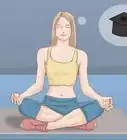This article was co-authored by Caitlin Downey. Caitlin Downey is a Registered Yoga Teacher at Yoga Therapy in Burlington, Vermont. She has over 200 hours of experience as a certified Yoga Instructor since 2014, and has over 600 hours of training as a certified Phoenix Rising Yoga Therapist.
There are 9 references cited in this article, which can be found at the bottom of the page.
wikiHow marks an article as reader-approved once it receives enough positive feedback. In this case, 93% of readers who voted found the article helpful, earning it our reader-approved status.
This article has been viewed 75,234 times.
Most yoga practitioners and teachers will tell you that it is never too late in life to start practicing yoga. However, anyone planning on starting yoga practice after 50 needs to be aware of the differences in body and health between themselves and a younger yoga beginner. Begin practicing yoga after 50 by starting slow and finding an instructor or a class that specializes in beginners or older adults.
Steps
Getting Started
-
1Get a complete physical before you start. Check in with your doctor to make sure your body will be able to handle yoga practice. Once your doctor signs off, make sure you continue checking in with them regularly, especially if something starts to hurt.
- Regular physicals can assess any future medical risks, screen for current medical issues, and help you live a healthy lifestyle!
- If you have a chronic condition, speak to your doctor to set up a custom check-up schedule that’s right for you.
- Before the first day of yoga class, make sure you speak to your instructor and let them know of any health concerns or injuries you have, so they can modify your poses accordingly.
-
2Find a yoga class that’s right for you. Many yoga studios offer classes for those 50 years of age and above. If there are no studios near you that offer those classes, consider signing up for a beginner yoga class in your area.
- Beginner yoga classes often offer additional support objects that might help you get started, including pillows to support your body, straps that help provide length for stretching, and sturdy blocks to be used as a hand or foot rest.
- If you are not able to find a beginner yoga class, consider investing in these items on your own to make sure you’re able to do the poses without pain!
Advertisement -
3Invest in a good yoga mat. Some yoga studios provide mats, but getting one of your own helps guarantee mat quality and gives you a choice over what type of mat you’ll be using during your yoga practice. There are many different types and styles of yoga mats, so take some time to decide which one is right for you!
- Standard mats are around ¼” thick (0.64 cm), though mats can be as thin as 1/16” (0.16 cm) or as lush as ½” (1.27 cm).
- Make sure your mat does not get slippery when wet.
- Yoga mats are made of all types of materials. Traditional yoga mats are made of PVC, but more eco-friendly options include rubber or jute mats. For a lighter yet more expensive mat option, consider a cotton mat[1] .
Getting the Most out of Your Yoga Class
-
1Dress appropriately. You will want to wear comfortable clothing in a breathable fabric for yoga practice. Yoga clothes can be made of a variety of fibers, from cotton to bamboo to linen. When purchasing yoga clothes, aim for items that are comfortable and stretchable - make sure you can move easily in the clothes you have chosen![2]
-
2Make sure you warm-up. Stretching and warming up before exercise helps prepare your muscles for the yoga session, and increases the flow of blood and oxygen throughout your body![3] Prioritize warm-up routines that engage the major muscle groups you’ll be using in your subsequent yoga session[4] .
- Start by sitting on the floor with your hands on your knees.
- Raise your hands to the ceiling, fingers extended.
- Round your body forward and place your palms on the floor in front of you, relaxing your spine and head.
- Reach your arms behind you, drawing your shoulder blades together.
- Sit up and twist at the waist, first right, then left.
- End by sitting on the floor with your hands on your knees, and relax.
-
3Choose poses that are easier for beginners. Certain poses are easier on the joints than others, and this makes them perfect poses for a beginner! Knowing which poses are right for you will make your first yoga experience much easier, and help avoid the hurdles of painful or stressful positions. Keep in mind that you can always augment any position with additional support objects like pillows, straps, and blocks![5]
- Child’s pose is a great starting place. To simplify this pose, consider using a block for support. Come back to child’s pose to rest or refocus.
- Cobra pose can help strengthen your back. Don’t feel pressured to lift up all the way! Even lifting up a few inches is a great start.
- Tree pose is great for working on your balance. Feel free to hold onto a wall or chair if you need help balancing.
- Triangle pose can help build strength. One easy modification is keeping your eyes on the ground, instead of trying to look at the ceiling.
-
4Recognize poses that might be too hard for you. Eventually, you might want to attempt every pose, but as a beginner yoga practitioner, some poses will be harder than others. As always, it’s important to take your time and make sure you aren’t rushing into a pose you’re not ready for.[6]
- Avoid child’s pose if you have knee injuries or ankle problems.
- Skip downward facing dog and plank pose if you have carpal tunnel syndrome or another wrist problem.
- Don’t try seated twist pose if you have a back injury.
- Avoid bridge pose if you have a neck injury.
Practicing Yoga in the Studio
-
1Take your time. Study the way the instructor does each pose before you try it yourself. Remember that yoga is not a competition, you might not be able to do the pose exactly as the instructor can. Aim for your best, and try not to compare yourself to others! Everyone is at their own level.
- Go slowly as you move from one pose to another. Do not make any sudden movements that might cause you to pull a muscle or harm yourself.
- Respect your physical limits. Don’t force yourself into a pose. If something is too complicated, feel free to spend the time stretching or meditating, or ask your instructor for alternate ways to do the pose.
-
2Strengthen your balance by staring at a specific spot on the floor, wall, or ceiling. Pick a spot in your field of vision that doesn’t move and is relatively far away from your body. By keeping your focus on a single point in space, you are giving your center of gravity a reference point![7] If you are still having difficulty balancing, hold onto the wall or a chair for help, while maintaining your eyesight on a single point in space.
- You will still receive many of the benefits of the balance poses if you practice being on one leg, even if you can’t balance without holding on to something.
- By balancing, you decrease your risk of falling, which is the number one cause of injury among older adults.[8]
-
3Pay attention to your breathing. Take deep breaths through your nose and hold it for a short time. Release your breath through your nose when your instructor tells you to. If you ever find yourself short of breath or needing a break, take that time to focus on your breathing before returning to yoga practice. Feel free to sit down or return to child’s pose to do so.[9]
- Take your breathing lessons from yoga into your daily life. Adults 50 years of age and older tend to breathe shallowly. Deep and purposeful breathing can help with your health, circulation, digestion, and immune system.[10]
-
4Think peaceful thoughts. Meditation is a central part of yoga practice. Keeping yourself calm while you practice yoga is good for your mental health and thought clarity. To meditate, focus on your breathing and let your other thoughts fall away. Feel free to meditate before or after yoga practice, and on your own time as well.[11]
- Meditation through yoga can help both short and long-term memory!
- Through meditating, you are helping synchronize your left and right brain to improve overall brain function, leading to better focus, more creativity, and generally increased feelings of happiness!
References
- ↑ https://woman.thenest.com/thick-should-yoga-mat-be-12411.html
- ↑ https://www.artofliving.org/us-en/yoga/yoga-for-beginners/yoga-wear-secrets
- ↑ http://www.fitnesshealth101.com/fitness/weight-training/beginners/warm-up
- ↑ http://www.yogabasics.com/yoga-posture-sequences/whole-body/
- ↑ https://www.nytimes.com/well/guides/beginner-yoga
- ↑ https://www.nytimes.com/well/guides/beginner-yoga
- ↑ https://focus.masseyeandear.org/body-maintain-sense-balance/
- ↑ http://www.aarp.org/health/healthy-living/info-11-2013/health-benefits-of-yoga.html
- ↑ https://www.nytimes.com/well/guides/beginner-yoga
About This Article
If you’re over 50 and your doctor has cleared you to start doing yoga, you should look for classes that are for either people over 50 or are for beginners in general. A lot of these classes offer support objects to make starting easier, like blocks that can be used as hand or foot rests. It’s also important to avoid pain by starting with poses that are easy on the joints, like the Cobra pose, which can help strengthen your back. As you learn, you might want to try every pose, but you’ll need to listen to your body and recognize poses that might lead to injury. For example, Child’s pose should be avoided if you have knee or ankle problems, and downward facing dog isn’t good if you have carpal tunnel syndrome. For more help from our Yoga co-author, like how to pay attention to your breathing during yoga, read on!
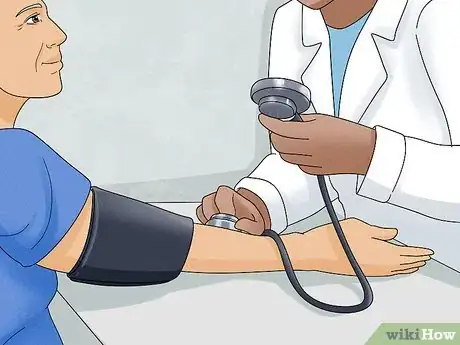
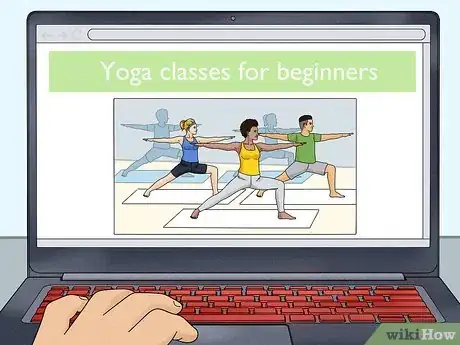
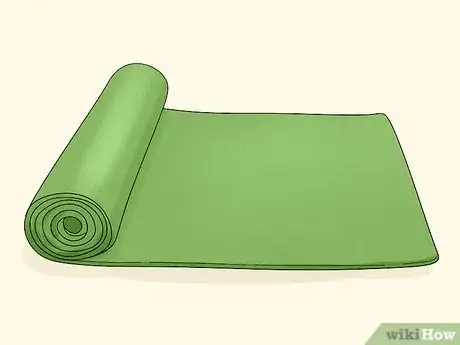
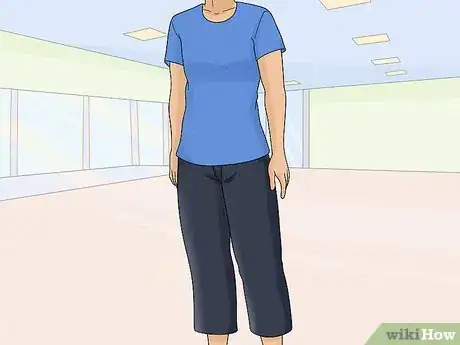
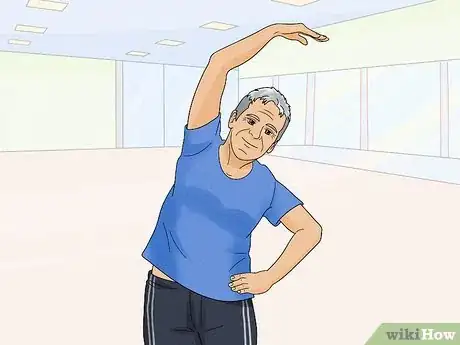

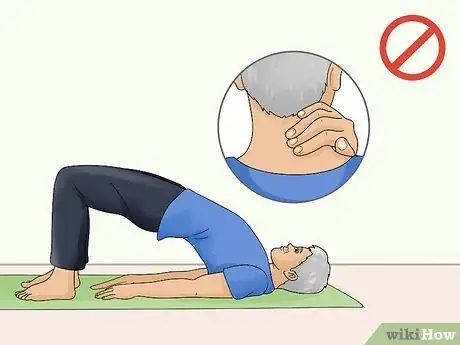
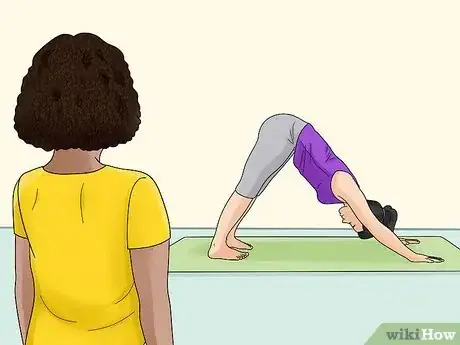
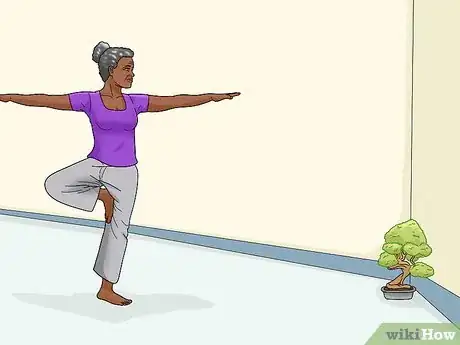
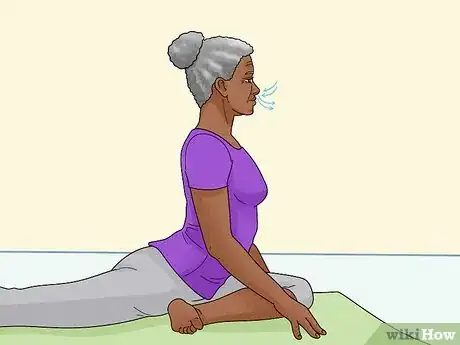
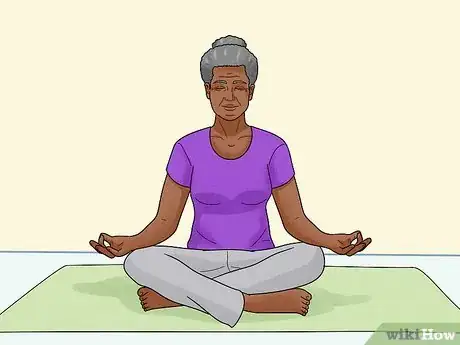




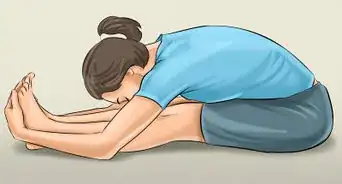




-Step-16.webp)













